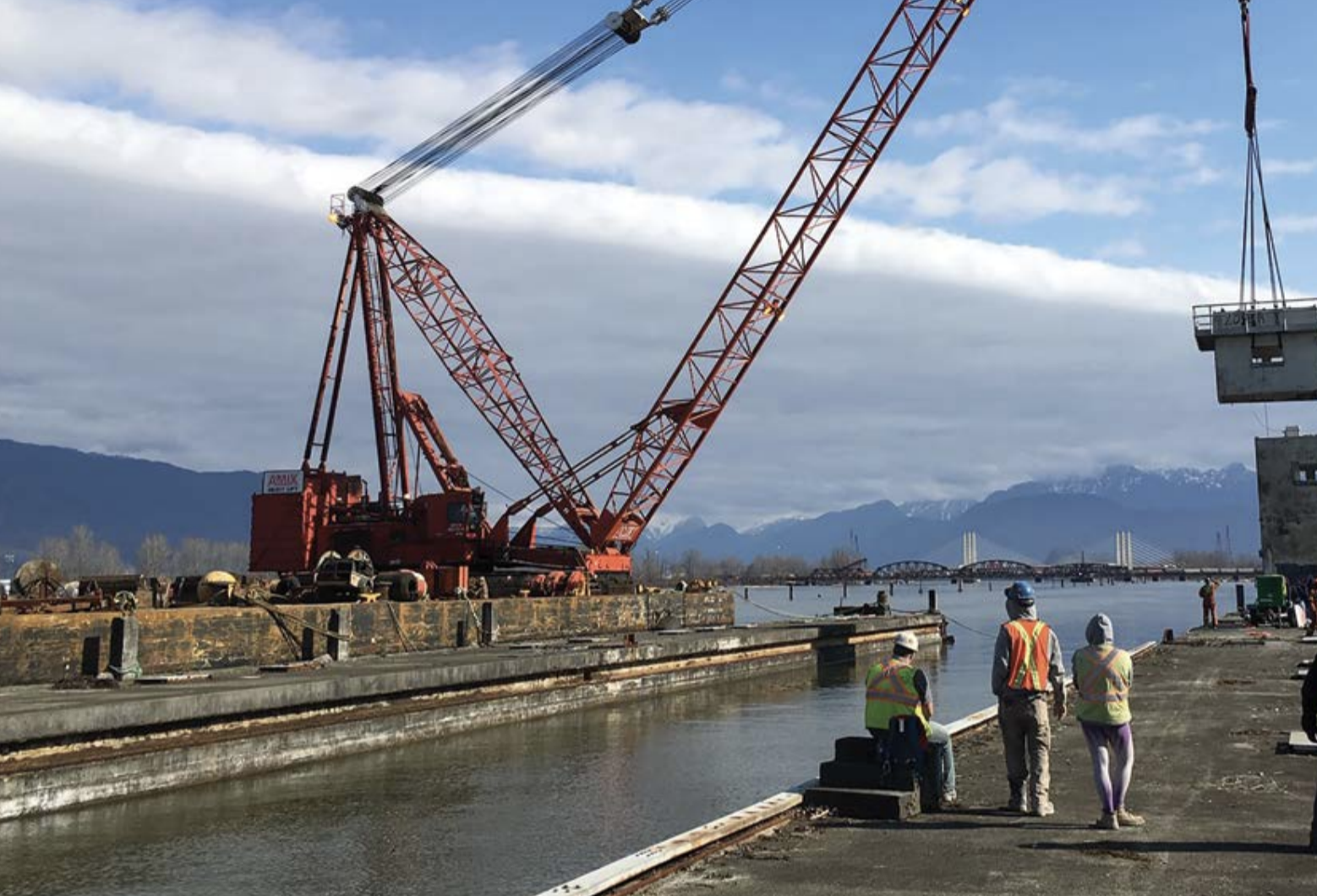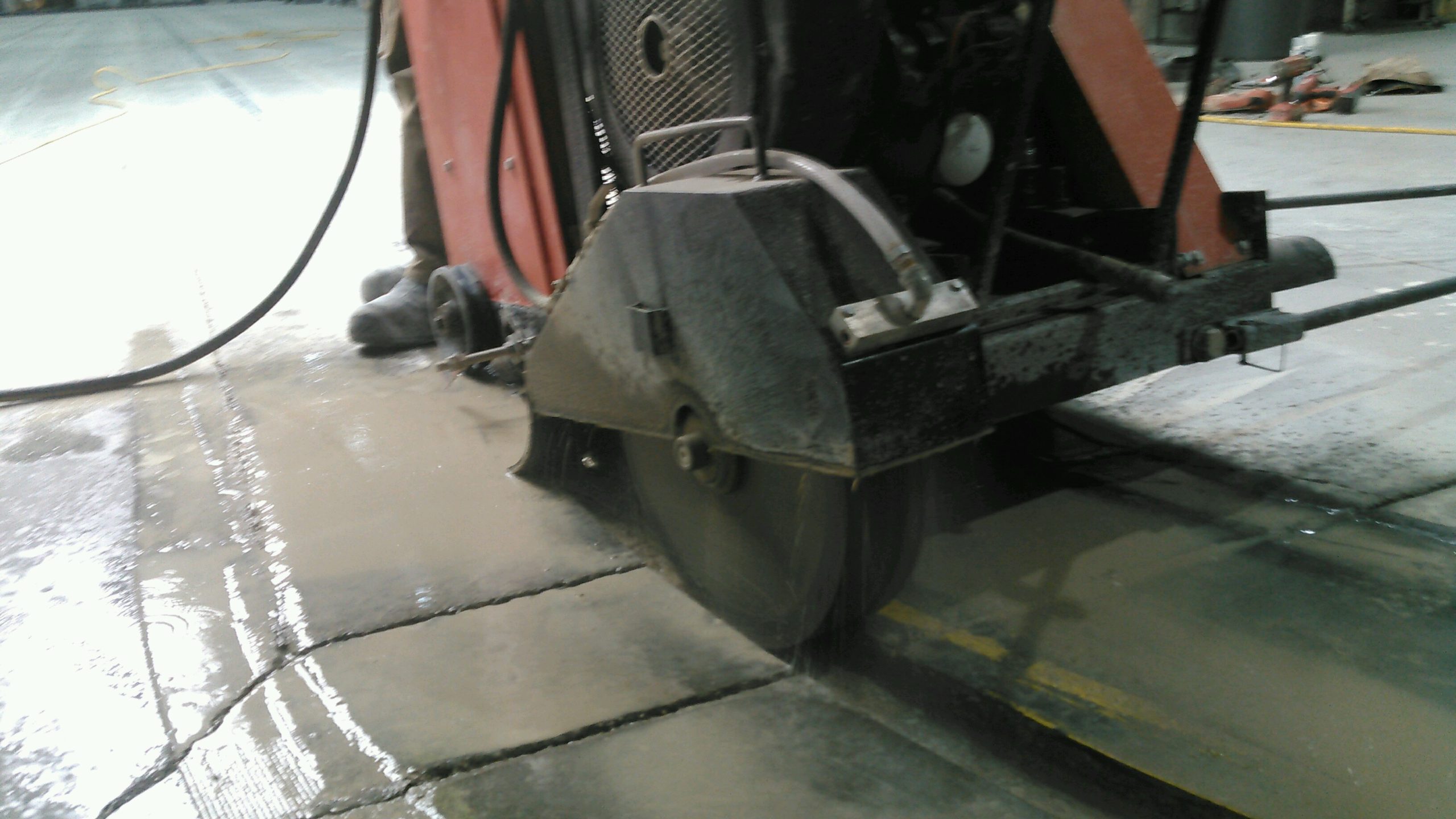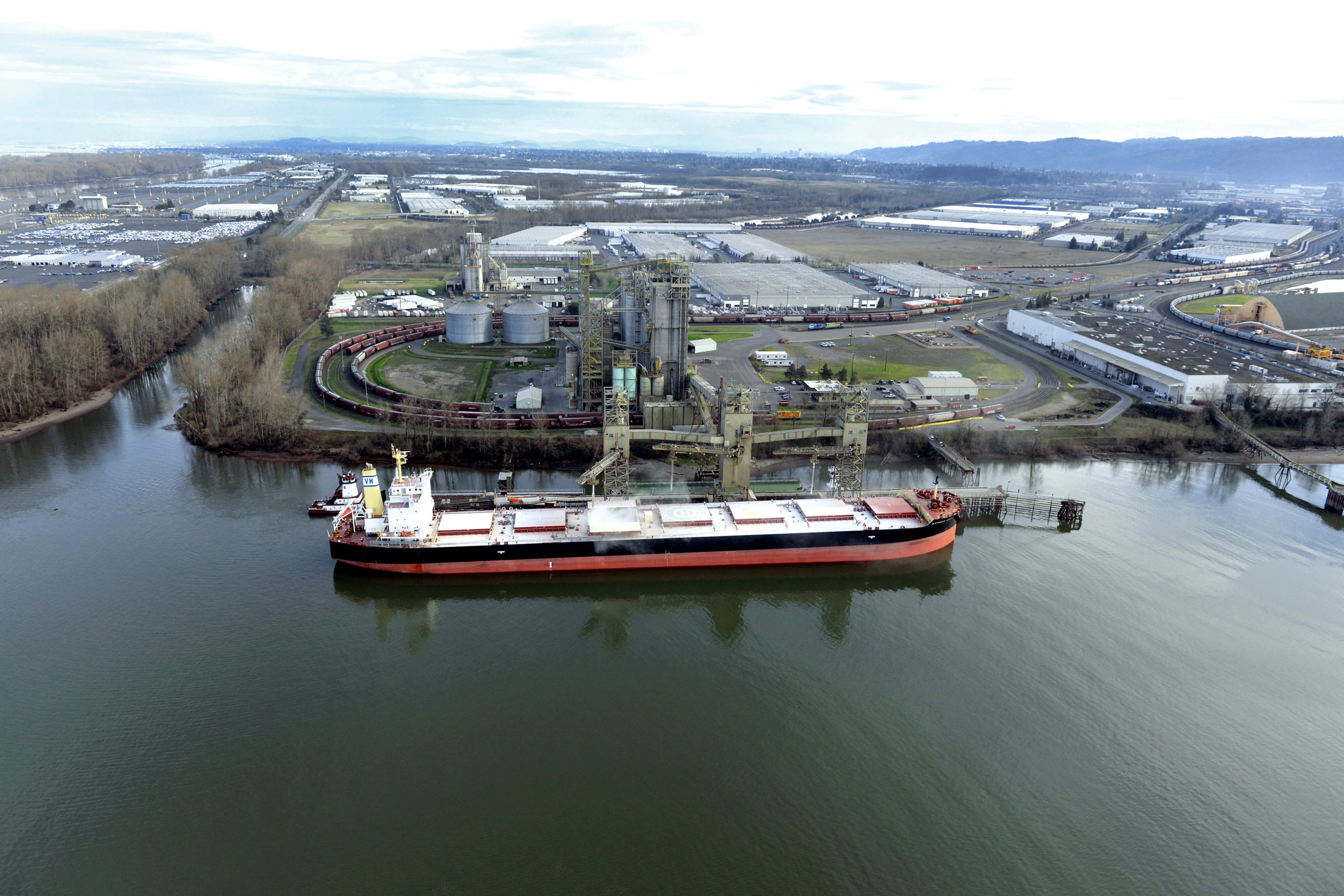
Repurposed Bridge Finds New Life in British Columbia

Decommissioned Hood Canal Bridge Now Repurposed All Over the World
Sewell’s Marina in British Columbia, Canada sits on picturesque Horseshoe Bay, at the entrance to Howe Sound. The marina hosts three million visitors a year to their ocean playground and is a popular spot for boaters and travelers. Sewell’s Marina offers moorage, a fuel dock, launch ramp, boat rentals and a tourist information center.
In February 2019, a severe winter storm caused a rupture in the marina’s protective breakwater, a large barge that was permanently moored to the sea floor. Replacing a breakwater is no easy task. Fortunately, the owners of Sewell’s Marina discovered that parts of Washington State’s decommissioned Hood Canal floating bridge were stored nearby on the Fraser River in Vancouver. Parts of the former bridge had been repurposed all over the world – one section was towed to the north coast of Australia to be used as ship berthing docks; two sections now support the cruise terminal in Sitka, Alaska and one section was towed to Port Alberni, B.C. for use as a breakwater and pier. The last remaining section of the well-preserved floating concrete pontoon stored on the nearby Fraser River could be modified to create a new breakwater. One major problem—the 1,087- foot pontoon was too big. The new breakwater had to be 661 feet long. In 2009, CSDA member Cutting Edge Services of Batavia, OH, did the initial wire sawing of the Hood Canal bridge over a period of 45 days. In 2013, some of those parts were wire sawed by CSDA member Canadian Cutting and Coring of Vancouver, B.C. for repurposing. Because of their previous work on the Hood Canal bridge sections, Sewell’s Marina called on Canadian Cutting and Coring (CCC) to right-size the pontoon for use as a breakwater in Horseshoe Bay. CCC determined that the only way to modify the pontoon was with two vertical cuts. The cutting would be done at the storage location on the Fraser River and when complete, the pontoon would be towed to its new home at Sewell’s Marina. At one end of the pontoon stood what remained of a concrete and steel control tower which had been used for opening and closing the bridge. The control tower had to be removed before the vertical cuts could be made.

But if a 120-ton-plus concrete structure was suddenly removed from one side of the pontoon, the entire pontoon would capsize or at best become very unstable. Additionally, removing hundreds of square feet from the length of the pontoon would also make it unstable. Re-ballasting to compensate for the buoyancy would have to be undertaken first. Re-ballasting was accomplished with careful calculations. Then, water was pumped in or out of the isolated cells in the pontoon. CCC emptied the cells on the opposite side from the tower before cutting began. The aged control tower was 44 feet high with a base footprint of 15’ by 15’ and a steel structure at the top. The peak of the control tower was first to go – CCC used cutting torches to cut the structural steel roof members. Then, the steel was lifted in one piece by a 600-ton crane. CCC then went to work on what remained of the control tower with a Hilti TS-20 wall saw, cutting the concrete structure into two sections weighing 40 tons and 80 tons. The top half was lifted by crane onto the opposite pontoon. Then the bottom half of the control tower was sawn off at the base and lifted onto the opposite pontoon. Later, the remnants of the control tower were transported by barge for demolition by a salvage company. Once the tower was gone, pre-tensioning cables had to be cut in the pontoon without damaging the internal walls. CCC placed wood cribbing behind the ends of the post tensioning cables and in front of the internal walls. When the cable was released, the wood absorbed the energy of the impact, protecting the walls from damage. Next, the sections of the pontoon which connected the two lengths had to be cut. The only catch was that these sections were submerged 17 feet underwater.

Further complicating cutting was the amount of slurry that would be created, which could harm marine life. To minimize the marine impact, a slurry containment jacket was designed in-house and built by a client. The slurry jacket was basically a stainless steel channel strapped around the bottom and sides of the pontoon. Vacuums were used to remove the slurry from the channel and then emptied into a Golz slurry recycling system onsite. At last ready to make the vertical cuts, CCC drilled six core holes with Hilti core drills and six Diamond Products Weka core drills for the diamond wire runs. Then three vertical cuts were made in each section of the pontoon with a Hilti WS-15 wire saw. Each section measured 529 square feet. Core bits were custom manufactured by Cyclone Diamond Products of Burnaby, B.C., and diamond wire was supplied by Hilti and Cyclone.
With the vertical cuts complete and the pontoon right-sized, this former piece of the Hood Canal bridge was ready to be towed to its new home in Horseshoe Bay. John Van Dyk of Canadian Cutting and Coring said, “This is an excellent example of using cutting technology to re-purpose a structure. We were able to quickly replace the storm-damaged breakwater with a much more robust concrete structure, offering improved marine protection for Sewell’s Marina and the entire small boat basin at Horseshoe Bay.” CSDA contractors have a long, successful history of collaborating on complex and large projects. The relationship between Cutting Edge Services and CCC, and then the ensuing relationship between CCC and the marina owners gave the confidence to all parties involved that CCC would be able to complete this project without any issues. Concrete cutting techniques continue to help re-purpose structures around the world.
COMPANY PROFILE
Canadian Cutting & Coring, Inc. was founded in 1964 and
acquired by current owner John Van Dyk in 2006. They are
located in Vancouver, B.C., have two branch locations and
eight trucks. They are a full-service sawing, drilling and
selective demolition operation and build on the strengths
of their staff, CSDA relationships and ingenuity. Canadian
Cutting & Coring has been a CSDA member since 2003.
RESOURCES
General Contractor/Owner
Sewell’s Marina
CSDA Cutting Contractor
Canadian Cutting & Coring, Inc.
John Van Dyk
Phone: 250-883-3831
Email: info@concretecutting.ca
Methods Used
Wall Sawing, Core Drilling, Wire Sawing














